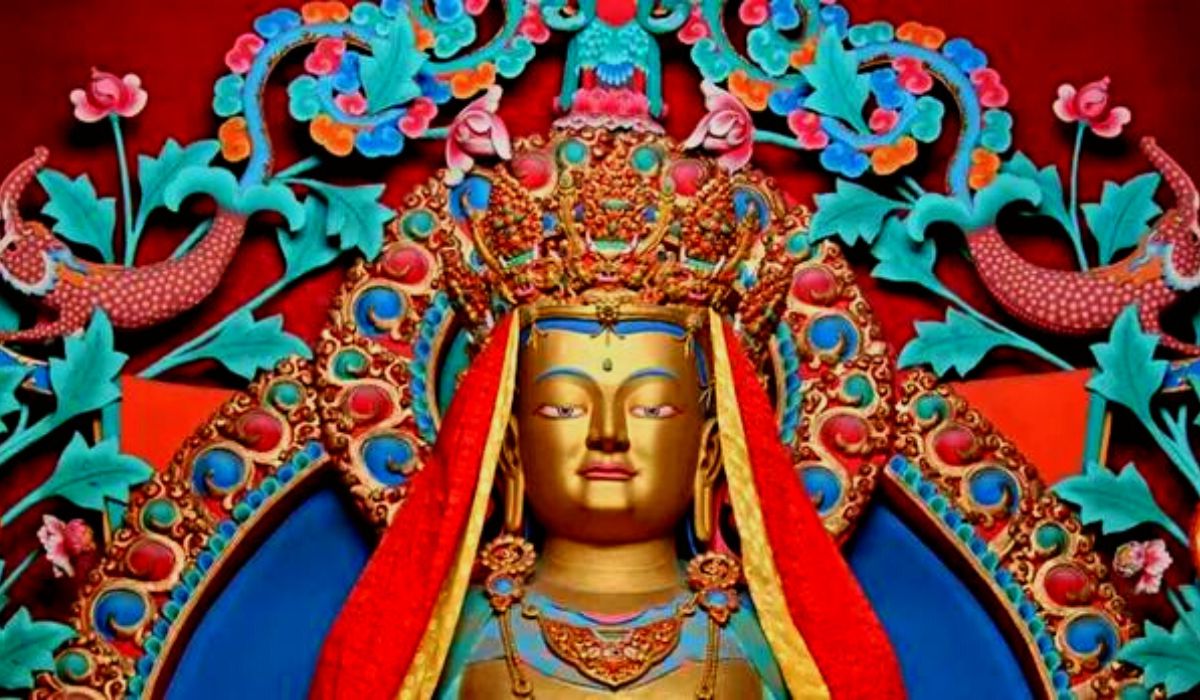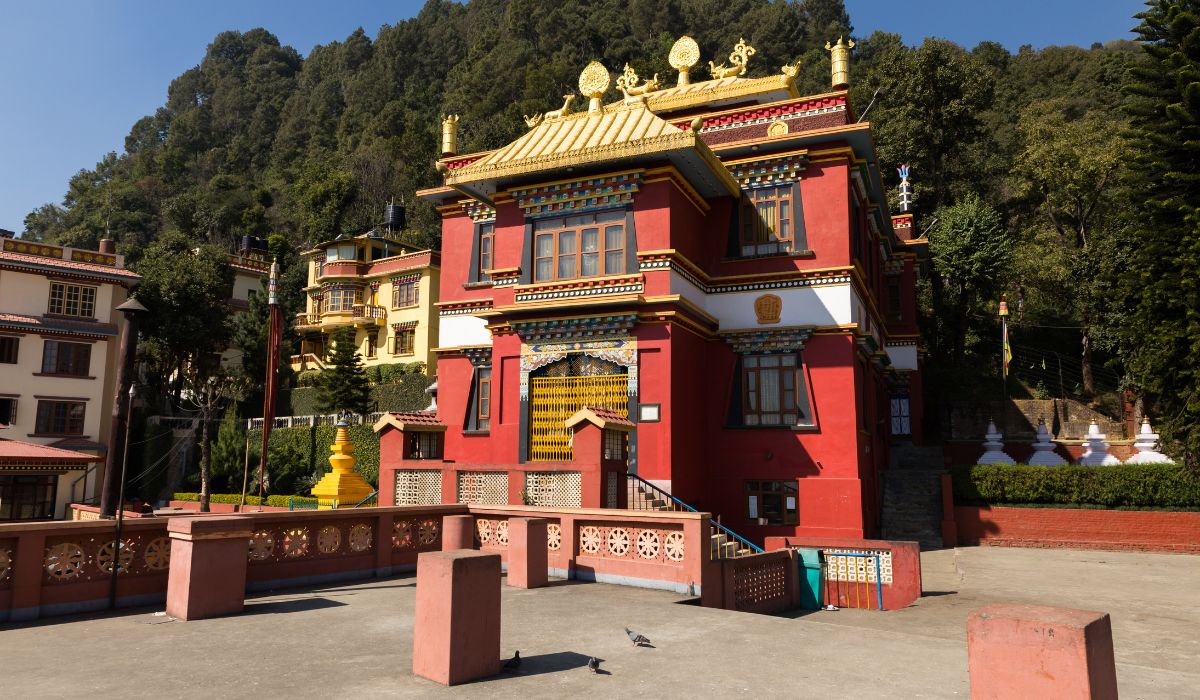
The Bon Religion of Nepal: History, Beliefs, and Practices

The Bon Religion of Nepal: History, Beliefs, and Practices
swotah travel
19157
14, 02 2023
The Bon religion is an ancient religion of Tibet and Nepal that has been practiced for hundreds of years. It is still debatable, but a lot of experts considered it to be closely related to Tibetan Buddhism. However, the Bon religion has its own distinct set of beliefs and practices.
This blog post will discuss the history of the Bon religion, its core beliefs, and some of its traditional practices and rituals, along with the major deities. Moreover, we will look into the differences between Buddhism and the Bon religion in summary. By exploring the Bon religion, we can gain a deeper understanding of the cultural and spiritual practices of Nepal.
History
The Bon religion, aka Yungdrung Bon, is one of the oldest religions in the country, with its origin believed to date back to the pre-Buddhist period. It is believed to have developed in Tibet during the tenth and eleventh centuries, but its true origin is unknown. It is an animistic religion that mainly worships nature, although it also has elements of Buddhism and Shamanism incorporated into it. The practitioners of the Bon religion believe that its origin is in Zhang Zhung, which is located in the Himalayas near Mount Kailash. A number of Buddhist scholars believe Bon as a dark religion or a religion that has a negative influence.
According to ancient texts, the religion was split into two primary categories, black and white. These opposing forces of light and darkness gave birth to two persons initially. On the one hand, the black man often referred to as Nyelwa Nakpo ("Black Suffering"), is said to have created all the stars and demons and to be the cause of evil occurrences like droughts. On the other hand, the white man Serden (also known as "Radiant One") is a kind and honest individual. He created the sun and moon and introduced religion to humankind. These two opposing forces are still engaged in a war within each person's heart as well as in the sphere of good vs. evil. The white part, which was primarily centered on nature worship, included a variety of rites and offerings made to spirits and deities thought to live in nature. The black part was more focused on shamanism and was used to communicate with the dead, ask for guidance and protect against evil spirits.
Buddhism started to be practiced in Nepal during the Licchavi dynasty's reign between 400 and 750 CE, and it gradually gained a lot of popularity. As a result, Bon became lesser known but it was still performed in various regions of the Himalayas like Dolpo.
Bon religion experienced a rebirth in the 17th century after Tulku Sangye Lingpa and the first Kundrol Drakpa monk from Tibet restored Bon as a distinct religion. They allegedly adopted the genuine Bon religious teachings. Since then, it has slowly gained more disciples, especially among the Himalayan Sherpa people.
Although Buddhism and Bon are separate religions, many of their practices and beliefs are similar. This has made it possible for the two religions to coexist peacefully and has also aided in the survival of some unique features of Bon culture.

Photo: Triten Norbutse Monastery Nepal
Beliefs
The Bon religion is an ancient religion that has been practiced in Tibet and Nepal for centuries. Its core beliefs focus particularly on the three jewels: body, speech, and mind. It also believes that individuals are composed of five elements: earth, water, fire, air, and space. These five elements interact with each other to bring about positive transformation. The cosmic egg that formed the entire universe is said to have formed from these elements in the Bon religion.
In accordance with the Bon religion, Tonpa Shenrab Miwoche is the sole source of knowledge and wisdom for humanity. Truth and justice come from him, and he is the one to seek if one wishes true freedom. Knowledge, understanding, compassion, and wisdom are considered to be the four pillars of the spiritual journey.
Bon philosophy places an emphasis on spiritual salvation and sees the earth as a place of suffering, much like Buddhism does. Along with the six planes of existence found in Buddhism, they also teach karma and reincarnation.
Numerous ceremonies and issues that are uncommon in Tibetan Buddhism are also present in Bon. Many of these are practical and worldly, such as ransom rites to appease local deities and divination practices intended to transport the spirit of the deceased to astral planes.
All life is considered to be holy and intertwined in the Bon religion. People must try to maintain the environment and the community in harmony. Moreover, the dead and their ancestors are held in high regard. Every day, practitioners pray, chant mantras, and make offerings to the gods and spirits.
Afterlife and karma are important concepts in the Bon religion. Individuals will experience many life cycles before attaining enlightenment. Practitioners use ceremonies, meditations, and pilgrimages to enhance their spiritual power.
The ultimate goal of the spiritual path is to gain liberation from the world, aka samsara(the cycle of death and rebirth) in Buddhism. The Bon religion also teaches non-violence and tolerance for all living creatures. Respect for nature is seen as an important part of maintaining balance in the universe. This faith does not recognize any other religion as superior or inferior to itself, which promotes harmony among people of different backgrounds.
Practices
Depending on the region and tradition, the Bon religion is associated with various practices. Offering sacrifices and incantations to gods and spirits are common Bon rituals, as are meditative practices such as visualizing divine beings and communing with them. Weddings, funerals, and divination may require the services of Bonpo priests.
In some areas, Bonpo priests also work as healers or shamans, diagnosing and treating illnesses with methods such as divination, herbs, and mantra recitation. Shamans can provide spiritual advice and healing in addition to physical ailments. Tantric rituals involve drawing mandalas and chanting mantras, and Bonpo priests may practice other activities designed to invoke the gods in some parts of Tibet.
Although the rites of the Bon religion differ greatly from one place to another, all Bonpo followers aim to achieve spiritual enlightenment and awareness via their rituals. Aiming to learn more about themselves and the world around them, Bon practitioners achieve it through tantrism, prayer, or meditation.
Bon vs. Buddhism
1. Rules for Bonpos are stricter than for Buddhist priests. For instance, Buddhists do not necessarily need to vow to be vegetarian. However, Bonpos must vow to be vegetarian.
2. Bon and Buddhism share many similarities, such as a belief in reincarnation and the existence of various deities. However, they also have some major differences. Bon beliefs are more animistic, focusing on ancestor worship and appeasing spirits, while Buddhism focuses on enlightenment through meditation and ethical living.
3. Bon also has a more shamanistic approach to spiritual practice, whereas Buddhism focuses more on the philosophical and spiritual study. Bon practitioners often practice divination and healing rituals and use visualizations and mantras for spiritual enlightenment.
4. Bon also differs from Buddhism in its view of the afterlife. In Bon, there is a belief in an eternal cycle of rebirth into multiple realms of existence based on one’s karma. Buddhists believe in the concept of Nirvana, or liberation from the cycle of birth and death.
5. Circumnavigation in the Bon religion is anticlockwise, while Buddhists circumnavigate in a clockwise direction.
6. Bon religion strongly emphasizes medicine, astrology, and tantric practices like Hinduism, while Buddhism focuses on nirvana.
7. Furthermore, Bon has its own set of scriptures, called mdo 'dus, gzer mig, and gzi brjid, which are considered sacred texts by Bon's followers. Buddhism relies on the Tripitaka or three baskets of Buddhist teachings.
8. Finally, Bon follows its unique religious calendar of festivals and observances that differ from Buddhism's. Bon ceremonies typically involve elaborate offerings and rituals to appease gods or spirits and gain spiritual protection.
Gods or Spirits of Bon religion
One of the key aspects of Bon is its belief in multiple gods and spirits. There are hundreds of gods, goddesses, and spirits in the Bon religion. However, four major enlightened beings are worshiped by Bonpos. Some of the most important gods and spirits in Bon include Satrig Ersang, Shenlha Okar, Sangpo Bumtri, and Tonpa Shenrab Miwoche.
Satrig Ersang is also known as the mother and means wisdom. One of her incarnations is called Sherab chamma (the loving lady of wisdom). The chants related to Satrig Ersang are SRUM, GAM, RAM, YAM, OM, and her color is yellow.
Shenlha Okar is also known as the wisdom priest of white light. He is believed to have created the universe and all living things, and he is the source of knowledge and spiritual power. Dharmakaya is considered to be a deity who is the consort of Shenlha Okar.
Sangpo Bumtri is also known as the procreator with no hands, ears, eyes, or nose because he only has a spirit. He is said to bring all the beings to the earth. He is also known as the creator god of the Bon religion.
Tonpa Shenrab Miwoche is also known as “the teacher” or a great priest. He is associated with Niramankaya, who is supreme. He is considered the present teacher of Bon's religion.
Bon believers additionally believe in a variety of ghosts and demons, which are considered to be accountable for misfortune, illness, and other sorts of misery. It's thought that these ghosts and demons have the power to possess individuals and make them perform terrible things. Because of this, Bon followers frequently perform rituals and rites meant to satisfy these ghosts and demons in order to defend themselves from harm.
Many people still perform the rites and ceremonies associated with the gods and spirits of the Bon culture till date. One can appreciate the rich history and culture of the Bon religion better by studying the different gods and spirits that are connected to it.
Conclusion
The Bon religion of Nepal is an ancient belief system that has been practiced for centuries in the region. It is thought to predate Buddhism, making it one of the world's oldest spiritual traditions. Bon religion is based on the teachings of Tonpa Shenrab, one of the four enlightened beings who is said to have contributed to humanity's enlightenment and is the teacher of Bon's religion at present. The religion incorporates a number of gods and spirits, as well as a number of rituals and practices.
The Bon religion, which has a sizable following among Tibetans, is still followed in Nepal. Despite not being as popular or prominent as Buddhism, Bon is undoubtedly a significant aspect of Nepalese culture and tradition. We can better appreciate the variety of spiritual traditions found in the Himalayas and the numerous contributions they have made to our knowledge of religion by being aware of its history, beliefs, and practices.
NEWSLETTER SIGNUP
Sign up to receive our trip ideas and travel offers!
Get updates and Exclusive Offers up to 20% Discount








